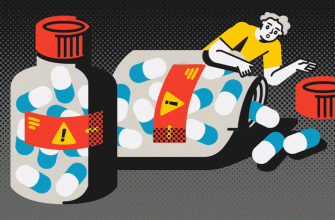No, amoxicillin is not typically the first-choice antibiotic for bladder infections (cystitis). Most bladder infections are caused by E. coli bacteria, and amoxicillin’s effectiveness against this specific strain is often limited. This is because many E. coli strains have developed resistance to amoxicillin.
Doctors usually prescribe antibiotics like nitrofurantoin, trimethoprim-sulfamethoxazole (TMP-SMX), or fosfomycin for uncomplicated bladder infections. These antibiotics generally demonstrate higher success rates against common urinary tract infection (UTI) bacteria. The choice depends on several factors, including your medical history and any allergies you may have.
Important Note: Self-treating a bladder infection is risky. Incorrect antibiotic use can lead to antibiotic resistance, making future infections harder to treat. Always consult a healthcare professional for diagnosis and treatment. They’ll conduct a proper examination, possibly including a urine test, to identify the causative bacteria and prescribe the most appropriate medication and dosage for your specific situation.
Seeking prompt medical attention is crucial for managing a bladder infection effectively. Delaying treatment could lead to complications, including kidney infections.
- Will Amoxicillin Cure a Bladder Infection?
- Alternatives to Amoxicillin for UTIs
- When to See a Doctor
- What is a Bladder Infection (Urinary Tract Infection)?
- Amoxicillin: Its Mechanism and Uses
- Effectiveness of Amoxicillin Against Bladder Infections
- Understanding Bacterial Causes
- Factors Influencing Amoxicillin’s Success
- Alternatives to Amoxicillin
- Conclusion
- When Amoxicillin Might Not Be Effective
- Alternative Treatments for Bladder Infections
- Seeking Professional Medical Advice
Will Amoxicillin Cure a Bladder Infection?
Amoxicillin might not be the best choice. Bladder infections, or UTIs, are frequently caused by E. coli bacteria, and many strains have developed resistance to amoxicillin. Your doctor will likely prescribe a different antibiotic, such as nitrofurantoin, trimethoprim-sulfamethoxazole (TMP-SMX), or ciprofloxacin, which are generally more effective against common UTI-causing bacteria.
Alternatives to Amoxicillin for UTIs
Nitrofurantoin is often a first-line treatment for uncomplicated UTIs. TMP-SMX is another common option, but resistance is increasing. Ciprofloxacin is a stronger antibiotic, typically reserved for more severe or complicated infections. Your doctor will consider your medical history, the severity of your symptoms, and any allergies before selecting an antibiotic.
When to See a Doctor
Don’t self-treat. See a doctor if you suspect a UTI. Symptoms include frequent urination, burning during urination, cloudy or bloody urine, and pelvic pain. Early diagnosis and appropriate treatment are crucial to prevent complications like kidney infections.
What is a Bladder Infection (Urinary Tract Infection)?
A bladder infection, also known as a urinary tract infection (UTI), happens when bacteria enter your bladder and cause an infection. This usually occurs when bacteria from the gut travel up the urethra, the tube that carries urine out of the body.
Common symptoms include:
- A strong, persistent urge to urinate.
- Burning sensation during urination.
- Passing frequent, small amounts of urine.
- Cloudy, dark, bloody, or foul-smelling urine.
- Pelvic pain, especially in women.
- Fever or chills (more severe infections).
Women experience UTIs more often than men due to their shorter urethra.
If you suspect a UTI, see a doctor. Delaying treatment can lead to kidney infections. Your doctor will likely perform a urine test to confirm the diagnosis and identify the bacteria causing the infection. They’ll prescribe antibiotics, like amoxicillin in some cases, tailored to your specific needs. Following your doctor’s instructions for medication is crucial for a full recovery.
To help prevent UTIs:
- Drink plenty of fluids, especially water.
- Wipe from front to back after using the toilet.
- Urinate after sexual intercourse.
- Consider cranberry supplements, although their effectiveness is debated.
- Avoid irritating substances like bubble baths.
Remember, this information is for general knowledge and shouldn’t replace professional medical advice. Always consult your doctor for diagnosis and treatment.
Amoxicillin: Its Mechanism and Uses
Amoxicillin is a penicillin-like antibiotic. It works by preventing bacteria from building cell walls, leading to bacterial cell death. This mechanism targets bacteria’s ability to reproduce and survive.
Amoxicillin’s effectiveness varies depending on the specific bacteria. It’s highly effective against many common bacterial infections, but resistance is an increasing concern. Always discuss antibiotic use with your doctor.
Common uses include treating:
| Infection Type | Specific Examples |
|---|---|
| Respiratory Tract Infections | Bronchitis, pneumonia (certain types) |
| Ear Infections | Otitis media |
| Skin Infections | Cellulitis, abscesses (in conjunction with drainage) |
| Urinary Tract Infections (UTIs) | Cystitis (bladder infections), pyelonephritis (kidney infections) – efficacy varies, doctor’s guidance needed |
| Dental Infections | Abscesses, gum disease |
Remember, amoxicillin is only effective against bacterial infections. It will not treat viral infections like the common cold or flu. Always consult a healthcare professional for diagnosis and treatment.
Effectiveness of Amoxicillin Against Bladder Infections
Amoxicillin’s success in treating bladder infections depends heavily on the type of bacteria causing the infection.
Understanding Bacterial Causes
Most bladder infections (urinary tract infections or UTIs) stem from Escherichia coli (E. coli) bacteria. Amoxicillin is generally effective against many E. coli strains. However, resistance is growing, meaning some E. coli are no longer susceptible.
- Resistance is a concern: Increased antibiotic resistance necessitates proper diagnosis before treatment.
- Other Bacteria: UTIs can also originate from other bacteria like Klebsiella, Proteus, or Enterobacter species. Amoxicillin’s ability to combat these varies significantly.
Factors Influencing Amoxicillin’s Success
- Accurate Diagnosis: A urine culture identifies the specific bacteria and its susceptibility to amoxicillin. This ensures the antibiotic will be appropriate.
- Dosage and Duration: Following the prescribed dosage and duration is paramount for complete bacterial eradication. Incomplete treatment can lead to recurrence and resistance development.
- Severity of Infection: Amoxicillin is generally suitable for uncomplicated UTIs. More severe infections may require stronger antibiotics.
- Patient Factors: Pre-existing medical conditions or concurrent medications can impact amoxicillin’s efficacy. Discuss any health issues with your doctor.
Alternatives to Amoxicillin
If amoxicillin proves ineffective or unsuitable, alternatives include nitrofurantoin, trimethoprim-sulfamethoxazole (TMP-SMX), or cephalosporins. Your doctor will select the best option based on the infecting bacteria and your individual needs.
Conclusion
While amoxicillin can treat some bladder infections, its success rate depends on several crucial factors. Consulting a doctor for a proper diagnosis and treatment plan is critical for optimal outcomes and to minimize the risk of antibiotic resistance.
When Amoxicillin Might Not Be Effective
Amoxicillin primarily targets bacteria; therefore, it won’t help if a virus causes your bladder infection. Your doctor can perform a urine test to identify the culprit.
Bacterial Resistance: Some bacteria develop resistance to amoxicillin. If previous treatments failed, a different antibiotic might be necessary. Discuss treatment history with your doctor.
Specific Bacteria: Amoxicillin may not be the best choice for infections caused by certain bacteria like Pseudomonas or Enterococcus. A culture and sensitivity test helps determine the most suitable antibiotic.
Severe Infection: For severe or complicated bladder infections, stronger antibiotics are often required. Your doctor assesses the severity and chooses the correct treatment.
Allergies: A known allergy to penicillin or amoxicillin is a clear contraindication. Alternative antibiotics will be considered by your physician.
Kidney Problems: Amoxicillin dosage must be adjusted if you have kidney issues. Your doctor will prescribe the correct amount, if safe to do so.
Alternative Treatments for Bladder Infections
Drink plenty of water. This helps flush bacteria from your urinary tract. Aim for at least eight glasses daily.
Cranberry juice may offer some relief. Its components prevent bacteria from adhering to the bladder wall. Opt for unsweetened varieties for best results.
Consider D-mannose. This simple sugar can bind to E. coli bacteria, helping to remove them from the urinary tract. Follow dosage instructions carefully.
Over-the-counter pain relievers like ibuprofen or acetaminophen can ease discomfort associated with bladder infections. Always follow package directions.
Apply a warm compress to your lower abdomen. Gentle heat can soothe bladder spasms and reduce pain.
Rest is crucial. Your body needs time to fight off the infection. Adequate sleep supports your immune system.
Important Note: These remedies can supplement, but not replace, antibiotics prescribed by a doctor. Always consult a healthcare professional for diagnosis and treatment of bladder infections. They can determine the best course of action for your specific situation.
Disclaimer: This information is for general knowledge and does not constitute medical advice. Always seek professional medical guidance for any health concerns.
Seeking Professional Medical Advice
Schedule an appointment with your doctor or a qualified healthcare provider as soon as possible. They can accurately diagnose your condition through a urine test and identify the specific bacteria causing the infection. This allows for targeted treatment.
Discuss your symptoms thoroughly with your doctor, including pain location, frequency of urination, and any other related issues. Providing complete information helps ensure they prescribe the most appropriate antibiotics and dosage.
Be open about any allergies or existing medical conditions you have. This prevents adverse reactions and ensures safe medication use. Your doctor will consider this information when creating a treatment plan.
Follow your doctor’s instructions meticulously regarding medication dosage and duration. Incomplete antibiotic courses increase the risk of antibiotic resistance and recurrent infections.
Contact your doctor immediately if your symptoms worsen or don’t improve after starting treatment. This is important for timely intervention and preventing complications.
Remember, self-treating a bladder infection can be risky. A proper diagnosis and treatment plan from a healthcare professional are crucial for your health and recovery.





